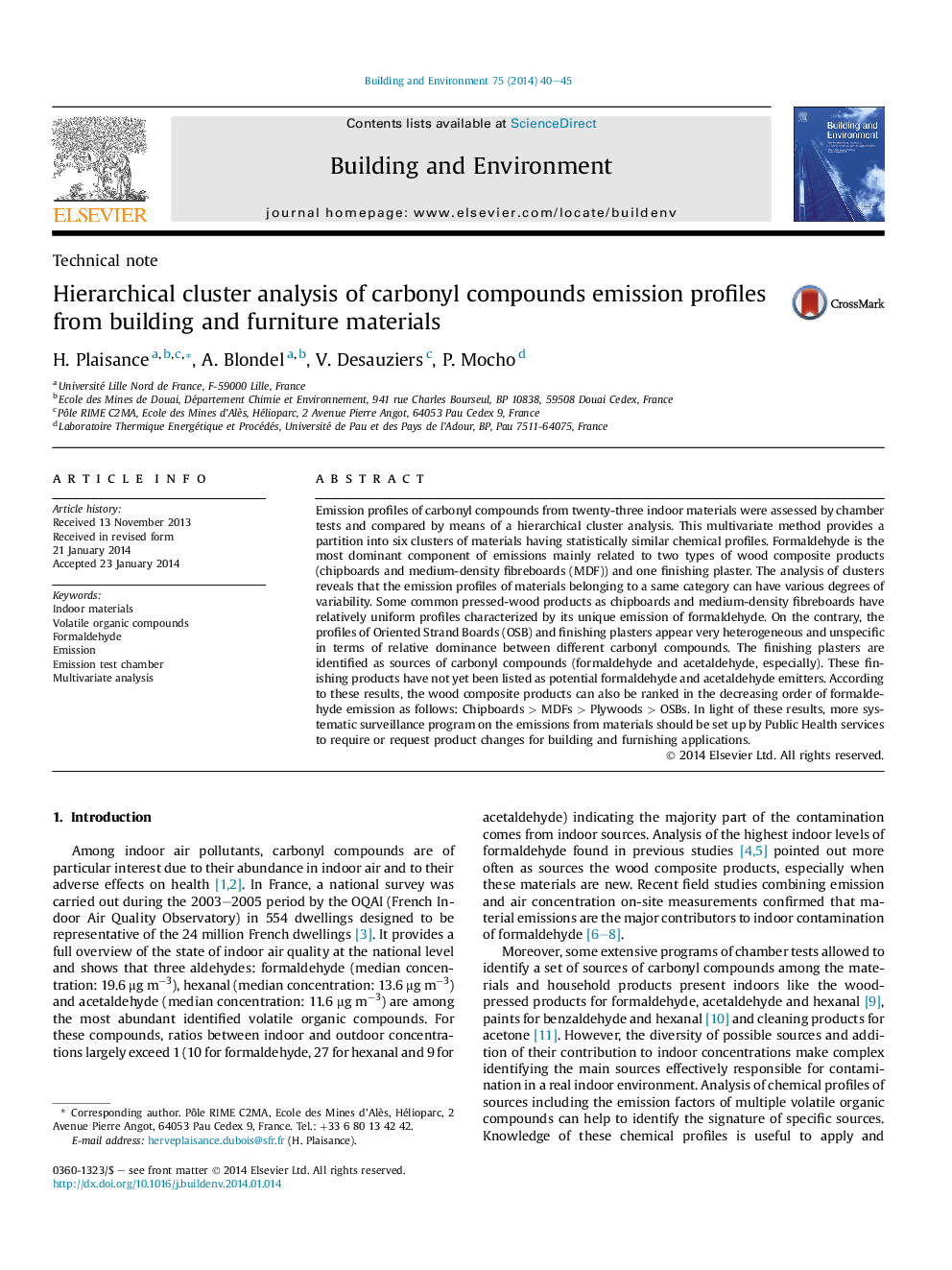| کد مقاله | کد نشریه | سال انتشار | مقاله انگلیسی | نسخه تمام متن |
|---|---|---|---|---|
| 248193 | 502552 | 2014 | 6 صفحه PDF | دانلود رایگان |
• Compared analysis of carbonyl compound emissions of a selection of indoor materials.
• To identify materials not yet listed as indoor sources of carbonyl compounds.
• To look for the specific characteristics of indoor material emission profiles.
Emission profiles of carbonyl compounds from twenty-three indoor materials were assessed by chamber tests and compared by means of a hierarchical cluster analysis. This multivariate method provides a partition into six clusters of materials having statistically similar chemical profiles. Formaldehyde is the most dominant component of emissions mainly related to two types of wood composite products (chipboards and medium-density fibreboards (MDF)) and one finishing plaster. The analysis of clusters reveals that the emission profiles of materials belonging to a same category can have various degrees of variability. Some common pressed-wood products as chipboards and medium-density fibreboards have relatively uniform profiles characterized by its unique emission of formaldehyde. On the contrary, the profiles of Oriented Strand Boards (OSB) and finishing plasters appear very heterogeneous and unspecific in terms of relative dominance between different carbonyl compounds. The finishing plasters are identified as sources of carbonyl compounds (formaldehyde and acetaldehyde, especially). These finishing products have not yet been listed as potential formaldehyde and acetaldehyde emitters. According to these results, the wood composite products can also be ranked in the decreasing order of formaldehyde emission as follows: Chipboards > MDFs > Plywoods > OSBs. In light of these results, more systematic surveillance program on the emissions from materials should be set up by Public Health services to require or request product changes for building and furnishing applications.
Journal: Building and Environment - Volume 75, May 2014, Pages 40–45
